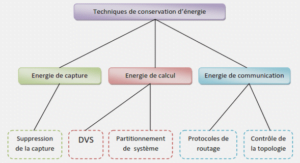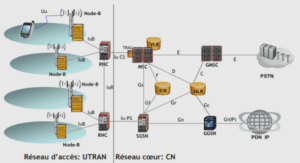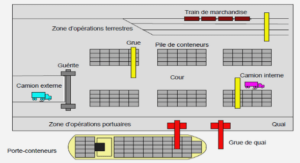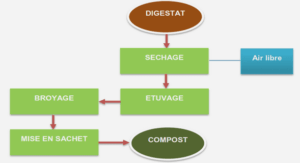Nowadays, 21st century, progress and innovation in science and technology are jawdropping. Wave propagation is directly impacted by the technology developments in several domains and applications. More particularly, millimetre-waves have concentrated much and much interest since more than ten years. Two main advantages, as compared to radio frequencies (RF, a few GHz), make millimetre-waves attractive today, (i) the wide bandwidth and (ii) the antennas small size. In current systems, the bandwidth is more or less proportional to the working frequency; except for the particular case of Ultra-WideBand dedicated to short range low data rate communications, the relative bandwidth is limited to a maximum of 10 to 15 %. Hence, for a given relative bandwidth, increasing the working frequency increases the bandwidth. The antennas size is also a key issue. It is obvious that smaller antennas lead to smaller systems, but the main interest stays the possibility to achieve large antennas arrays allowing focused beams, which is mandatory in order to address consumption issues for autonomous systems. Antennas arrays also enable to carry out beam-steering and/or beam-forming systems by using phased antenna arrays. In a more general point of view, millimetre-waves antenna arrays lead to an improved efficiency, as compared to RF systems, for the same area of the antenna system.
High-data-rate communications, radars, security, and medical applications are concerned by the development of millimetre-wave systems. In order to ensure data rates greater than a few Gbit/s, the most suitable solution has been to operate in the millimetrewaves. In the vicinity of 60 GHz, in particular, a common 5 GHz band between 59 and 64 GHz was defined for unlicensed use in the countries where the consumer electronic market was the most developed. This spectrum is an attractive option for very high data rate wireless local area networks (WLANs) or wireless personal area networks (WPAN). Moreover, this millimetre-waves radiation is capable of penetrating clothing while being partially reflected by human skin. As the reflection pattern of metals, but also plastics, ceramics and liquids are readily detectable for radiation at these frequencies, millimetrewaves imagers have been considered as a superior alternative as compared to traditional metal detectors. Hence, the security domain constitutes one of the major areas for millimetre-waves imaging systems. The frequencies better suited to this use are 35, 94, 140, and 220 GHz, which correspond to the atmospheric propagation windows, e.g. to the minima observed in terms of atmospheric attenuation. In the past, 94 GHz systems were usually adopted, but higher frequencies, leading to even better spatial resolutions, are under study. Recently, significant technological advances in the automotive industry have taken place for improving vehicles safety. The radar system can detect and track objects in the frequency domain triggering a driver warning of an imminent collision and initiate electronic stability control intervention. For long range radar there is a certain international consensus regarding the 76-77 GHz band whereas for short range such as anti-collision and handheld radars for parking assistance, pre-crash sensing, obstacle avoidance and blind spot detection the working frequency was fixed to 79 GHz. Here again, high spatial resolution is required and obviously the smallest antennas as possible.
Power dividers/combiners and Reflection Type Phase Shifter presentation
With the fast development of multifunctional technologies and the need for miniaturization in wireless communication systems, compact microwave components and circuits—especially microwave integrated circuits with system-level performance—have become increasingly popular. Those considerations stay available whatever the considered frequency range and topology, i.e. radio frequency (RF) in advanced PCB technologies, or millimetre-waves (mmW) compatible with CMOS and 3D integration techniques.
Among the large number of microwave integrated passive circuits, power dividers and phase shifters are fundamental, powerful and necessary, device building blocks. For wireless communication purpose, they are full part of the front-end transceiver. They can also be used independently to make analog active circuits more performing: power amplifiers or local oscillators are common example.
Planar dividers/combiners
Power dividers are usually considered to be a family of devices. They can be found in many applications, including power division and combination, modulation and demodulation, balanced mixing, balun for power amplification, Butler matrices, and feeding network of antenna arrays, among others. A reciprocal divider can provide an equal or unequal power split between two or more channels. Thanks to reciprocity, and assuming that input signals to be combined should be coherent and of equal magnitudes, this circuit may also be employed to combine a number of oscillators or amplifiers towards a single port.
The major parameters used to define and compare the dividers/combiners in RF and microwave integrated circuits are bandwidth, power division, relative phase difference, phase and magnitude imbalance, insertion loss, matching or return loss, isolation, number of inputs/outputs, integration level and cost. The performances concerning these parameters have been improved over time, either developing new topologies or with the help of more advanced techniques and methodologies. Consequently, more than one hundred different types of dividers/combiners have been developed over the past four decades.
S-CPW applications
Performance and compactness are extremely important requirements for components design, especially in integrated circuits where performance is limited by the technology and costs are directly linked to the surface area. Many miniaturization techniques, with their impact on the performance, have already been listed and described in the chapter I. Here we are interested in the Slow-wave CoPlanar Waveguide (S-CPW). This topology of transmission line (TL) has been under study for about six years in our laboratory IMEP-LAHC and already proved its great interest, [50] to [53], and [71], to [73]. Its low insertion loss leads to quality factors between 2 and 3 times higher than the classical TL one. Many development steps have been overcome: simulation, de-embedding, parameters extraction, topology optimisation, physical circuit model and realisation of simple circuits. The continuity of this development is now to enlarge the use of this type of TL in more complex microwave passive circuits in order to improve their performances and compactness.
A phase inverter in S-CPW, also presented as a miniaturisation tool in chapter I, was simulated, fabricated and measured. To prove its broadband and compactness benefits, two power dividers for balun application making requirement of a phase inverter were designed and measured. These circuits were realized in the 65 CMOS technology by STMicroelectronics.
In order to cover all the types of power dividers that had been considered in chapter I, the slow-wave technique was also applied to two power dividers with in phase and in quadrature outputs. The circuits are still under fabrication while writing my dissertation, so only the simulation results are shown. The technology involved for those ones is the 55 nm BiCMOS by STMicroelectronics.
At the beginning of this chapter, the simulation tool used for designing the TLs and devices is mentioned and the de-embedding methods applied to the measured TLs, two ports and four ports devices is explained. The performances and dimensions of the simulated and/or measured TLs needed for the devices are presented and gathered according to their back end of line (BOEL).
|
Table des matières
INTRODUCTION
CHAPTER I : POWER DIVIDERS/COMBINERS AND REFLECTION TYPE PHASE SHIFTER PRESENTATION
I.1 PLANAR DIVIDERS/COMBINERS
I.1.1 Overview
I.1.2 Wilkinson power divider/combiner
I.1.2.1 Presentation
I.1.2.2 Evolution
I.1.2.3 Striking applications
I.1.3 Branch-line coupler
I.1.3.1 Presentation
I.1.3.2 Evolution
I.1.3.3 Striking applications
I.1.4 Rat race coupler
I.1.4.1 Presentation
I.1.4.2 Evolution
I.1.4.3 Application
I.2 REFLECTION TYPE PHASE SHIFTER
I.2.1 Principle and theory
I.2.1.1 Insertion loss
I.2.1.2 Relative phase shift
I.2.1.3 Practical example with non-ideal varactor
I.2.1.4 Conclusion
I.2.2 Modified reflective load
I.2.2.1 Serial inductance
I.2.2.2 State-of-the-art at RF frequencies
I.2.3 Branch-line coupler substitution
I.2.4 Applications
I.2.5 State-of-the-art review
I.3 MINIATURIZATION TECHNIQUES
I.3.1 Shunt-stub-based artificial transmission lines
I.3.2 Meander and Fractals
I.3.3 Phase inverter
I.3.4 Capacitor loading
I.3.5 Stepped-impedance
I.3.6 Slow-wave transmissions lines
I.4 STATE-OF-THE-ART IN MILLIMETRE-WAVES
I.4.1 Power divider with in phase outputs
I.4.2 Power divider with quadrature outputs
I.4.3 Power divider with out-of-phase outputs
I.4.4 Phase shifter
I.5 CONCLUSION
CHAPTER II : S-CPW APPLICATIONS
II.1 SIMULATION TOOL
II.2 CALIBRATION & DE-EMBEDDING
II.2.1 Two port devices
II.2.1.1 Transmission Line
II.2.1.2 Devices
II.2.2 Four port devices
II.3 STACKS
II.4 SIMULATED AND MEASURED TRANSMISSIONS LINES
II.4.1 Study of the quality factor of the S-CPW in the 65 nm CMOS technology
II.4.2 Transmission lines in the 65 nm CMOS technology: measurement versus simulation results
II.4.2.1 Microstrip
II.4.2.2 S-CPW
II.4.2.3 Results synthesis
II.4.3 Transmission lines in the 28 nm CMOS technology: simulation results
II.4.4 Transmission lines in the 55 nm BiCMOS technology: simulation results
II.5 PHASE INVERTER
II.6 BALUNS
II.6.1 Rat-race coupler balun
II.6.1.1 Design and layout
II.6.1.2 Simulation versus measurement results
II.6.1.3 Further improvements
II.6.2 Power divider balun
II.6.2.1 Simulation versus measurement results
II.6.2.2 Further improvements
II.6.3 Comparison with the state-of-the-art
II.7 BRANCH-LINE COUPLER
II.8 POWER DIVIDER
II.9 CONCLUSION
CHAPTER III : NEW TYPE OF POWER DIVIDER BASED ON A WILKINSON POWER DIVIDER/COMBINER FOR MILLIMETRE-WAVE FREQUENCIES APPLICATIONS
III.1 ISSUES FOR WILKINSON POWER DIVIDERS IN SILICON TECHNOLOGY
III.1.1 Isolation resistance
III.1.2 Characteristic impedance flexibility
III.1.3 State-of-the-art of the solutions
III.2 STUDY OF A NEW SOLUTION
III.2.1 Topology presentation
III.2.2 Theory and design equations
III.2.2.1 Even-mode analysis
III.2.2.2 Odd-mode analysis
III.2.3 Design procedure
III.2.3.1 Demonstration of the good matching and isolation according to the value of S22
III.2.3.2 Procedure for finding solutions
III.3 CIRCUITS DESIGN AND EXPERIMENTAL RESULTS
III.3.1 Power Divider with R = 105 Ω
III.3.2 Power Divider with R = 150 Ω
III.4 HARMONICS SUPPRESSION
III.5 ANTENNAS ARRAY FEEDING NETWORK APPLICATION
III.5.1 2.45 GHz working frequency
III.5.2 5.8 GHz working frequency
III.5.2.1 1:4 feeding network
III.5.2.2 1:4 feeding circuit with antennas
III.6 MILLIMETRE-WAVE APPLICATION
III.6.1 Design and simulation
III.6.2 Sensitivity to the resistance value
III.7 CONCLUSION
CHAPTER IV : NEW TOPOLOGIES OF REFLECTION TYPE PHASE SHIFTER FOR HIGH FIGURE OF MERIT
IV.1 STUDY OF THE TOPOLOGIES
IV.1.1 Reflection load with one varactor
IV.1.2 Reflection load with two varactors
IV.1.3 Reflection load with three varactors
IV.2 DESIGN PROCEDURE
IV.3 CIRCUITS DESIGN AND EXPERIMENTAL RESULTS IN PCB
IV.3.1 Reflection load with one varactor
IV.3.2 RTPS with reflection load with two varactors cascaded with a Π-type phase shifter
IV.3.2.1 Choice of the RTPS
IV.3.2.2 Optimization of the Π-type phase shifter
IV.3.2.3 Simulation of the RTPS with the Π-type phase shifter
IV.3.2.4 Measurement results
IV.3.3 Reflection load with three varactors
IV.3.4 Results synthesis
IV.4 RTPS IN INTEGRATED TECHNOLOGY
IV.4.1 Topology of the reflection load based on a distributed loaded line phase shifter
IV.4.2 Layout and simulation of the RTPS
IV.4.3 RTPS, loaded line phase shifter alone and state-of-the-art comparison
IV.5 PERSPECTIVES
IV.6 CONCLUSION
CONCLUSION
![]() Télécharger le rapport complet
Télécharger le rapport complet






